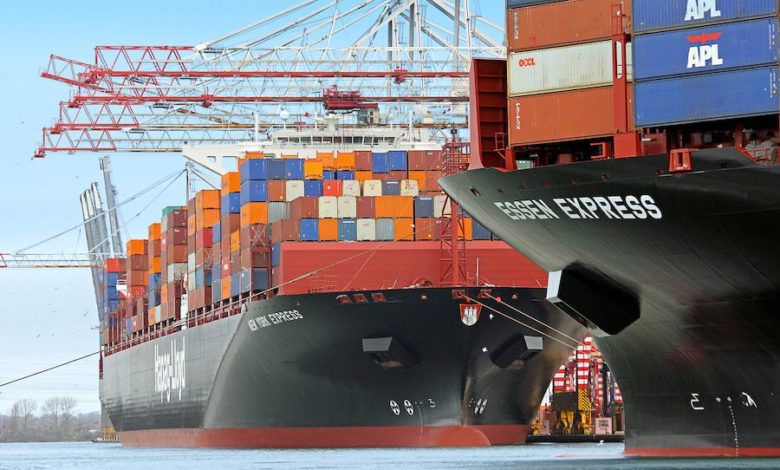Inactive box fleet reduces as chartering activity heats up

Leading names in container shipping who suggested two months ago that May would prove to be the absolute nadir for the market could well have been proved correct with latest data from Alphaliner showing the inactive boxship fleet has peaked, and there has been a sudden uptick in chartering activity in recent days.
CMA CGM’s Rodolphe Saade was among a host of top names who back in April, as coronavirus lockdowns manifested across the world, suggested May would be the toughest month for liner shipping.
Alphaliner has provided some hopeful data for the hard-pressed sector. The inactive containership fleet reached a peak at the end of last month and since then – through to June 8 – it has decreased by 110,000 teu to 521 ships totalling 2.61m teu. Alphaliner is predicting this downward trend to continue in the foreseeable future as carriers progressively resume suspended services and reinstate selected sailings initially planned to be blanked.
Another sign that the worst might have passed – aside from surging transpacific freight rates -is seen in the container charter market, which has recorded a high level of fixtures in recent days, especially in the larger sizes and in the classic panamax segment.
“Demand for VLCS units of 7,500 teu and over, which had entirely vanished at the peak of the COVID-19 crisis, has returned with a bang, with a record number of fixtures concluded over the last two weeks,” Alphaliner stated in its most recent weekly report.
Demand for classic panamaxes of 4,000-5,299 teu has also risen sharply, helping to reduce the pool of spot ships.
The high demand in these sizes has however failed to lift charter rates, which are 40% to 50% lower than before the onset of the Covid- 19 pandemic.
“This rate meltdown is prompting charterers to secure tonnage for the longest possible employments,” Alphaliner reported.
Liner executives are remaining cautious about any sign of real turnaround in fortunes.
“We see a pretty steep decline [in volumes] right now in the course of Q2,” Rolf Habben Jansen, chief executive of Germany’s Hapag-Lloyd, told investors last month. “We expect it to run somewhere into the third quarter.”
Projections from the Organisation for Economic Co-operation and Development (OECD) earlier this month bear out this sense of caution.
The OECD’s economic outlook for 2020-21 has two scenarios: a single-hit where the virus gets under control and a double-hit with a second round of outbreak later in 2020.
The single-hit will lead to a global GDP drop of -6% in 2020 followed by growth of 5.2% in 2021. A double-hit will lead to a drop of -7.6% in 2020 and only a growth of 2.8% in 2021. Even in the optimistic case, global GDP will not be back up to 2019 levels by the end of 2021.
The OECD warned: “Output is projected to decline in all economies this year”
World trade volumes will similarly not recover by end 2021. In the single-hit scenario, end 2021 will still be some 3% below 2019 and in the double-hit it will be 8% below.
Real per-capita income will by end 2021 only be at the same level as it was in 2013 in the typical OECD economy in the double-hit scenario.
“From a container shipping perspective this means that we should clearly expect the current environment to persist for a while and all stakeholders should plan for a sustained period of capacity reductions,” container shipping expert Lars Jensen wrote in a recent post on LinkedIn.
